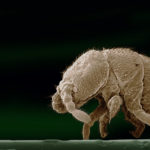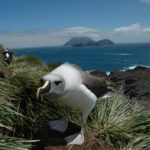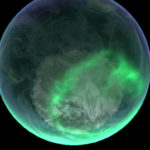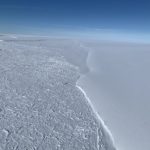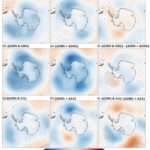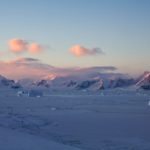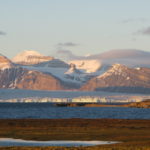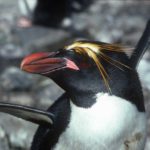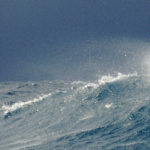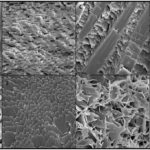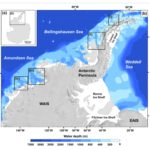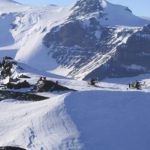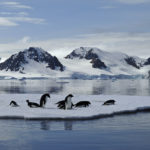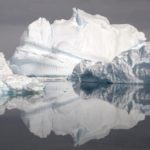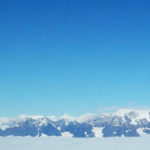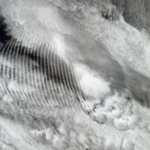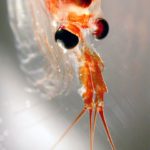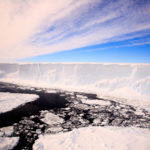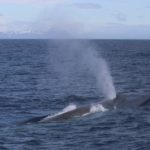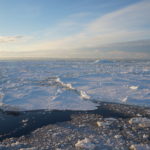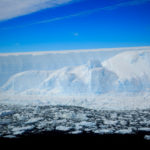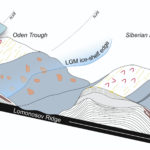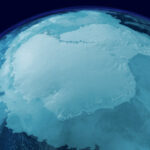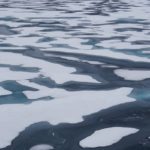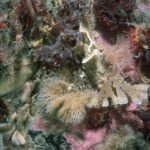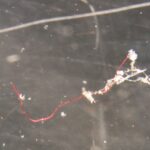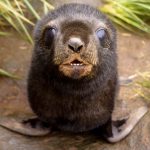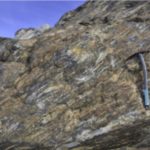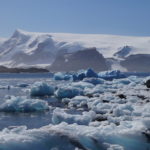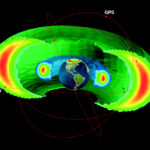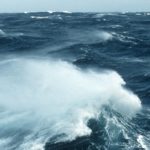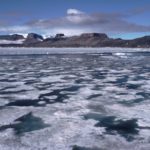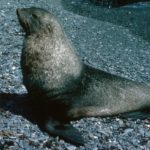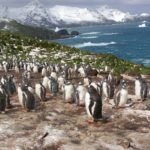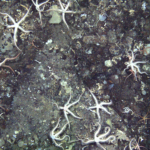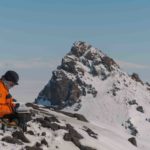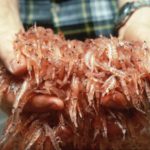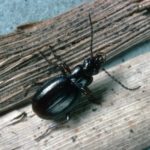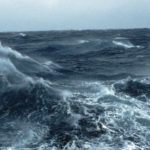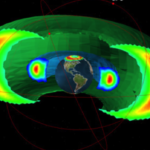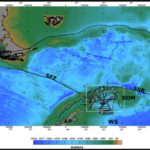Our publications
Showing: All publications
Found 13639 items
Re-evaluating the internal phylogenetic relationships of Collembola by means of mitogenome data
30 December, 2020 by Peter Convey
Collembola are an ancient and early diverging lineage of basal hexapods that occur in virtually all terrestrial habitats on Earth. Phylogenetic relationships between the different orders of Collembola are fiercely…Coupled impacts of sea ice variability and North Pacific atmospheric circulation on Holocene hydroclimate in Arctic Alaska.
29 December, 2020 by Irene Malmierca Vallet
Arctic Alaska lies at a climatological crossroads between the Arctic and North Pacific Oceans. The modern hydroclimate of the region is responding to rapidly diminishing sea ice, driven in part…Mercury exposure in an endangered albatross: long-term changes and consequences for breeding success
23 December, 2020 by Richard Phillips, William Mills
Mercury (Hg) is an environmental contaminant which, at high concentrations, can negatively influence avian physiology and demography. Albatrosses (Diomedeidae) have higher Hg burdens than all other avian families. Here, we…Sea ice feedbacks influence the isotopic signature of Greenland ice sheet elevation changes: Last interglacial HadCM3 simulations
21 December, 2020 by Irene Malmierca Vallet, Louise Sime
Changes in the Greenland ice sheet (GIS) affect global sea level. Greenland stable water isotope (δ18O) records from ice cores offer information on past changes in the surface of the…Pan-Arctic surface ozone: modelling vs. measurements
21 December, 2020 by Xin Yang
Within the framework of the International Arctic Systems for Observing the Atmosphere (IASOA), we report a modelling-based study on surface ozone across the Arctic. We use surface ozone from six…Read more on Pan-Arctic surface ozone: modelling vs. measurements
A previously undescribed Helotialean fungus that is superabundant in soil under maritime Antarctic higher plant
18 December, 2020 by Chester Sands, Kevin Newsham
We report a previously undescribed member of the Helotiales that is superabundant in soils at two maritime Antarctic islands under Antarctic Hairgrass (Deschampsia antarctica Desv.). High throughput sequencing showed that…Fostering global science networks in a post-COVID-19 world
18 December, 2020 by Eugene Murphy
Disruptions to global science networks have followed COVID-19 restrictions. Rather than wait for a return to normal, we propose four areas that can ensure a productive and collaborative future for…Read more on Fostering global science networks in a post-COVID-19 world
Alpha transmitter signal reflection and triggered emissions
16 December, 2020 by Richard Horne
Russian Alpha radio navigation system (RSDN‐20) emits F1=11.9kHz signals into the magnetosphere which propagate as whistler‐mode waves. Observed by waveform continuous burst mode from EMFISIS on Van Allen Probes, a…Read more on Alpha transmitter signal reflection and triggered emissions
Calibration of shell δ18O from the common whelk Buccinum undatum highlights potential for environmental reconstruction
15 December, 2020 by Philip Hollyman
The common whelk, Buccinum undatum, is a commercially important gastropod found throughout the North Atlantic. One method of age and life history analysis for gastropod species is the use of…Wintertime Southern Hemisphere jet streams shaped by interaction of transient eddies with Antarctic orography
15 December, 2020 by Thomas Bracegirdle
The wintertime Southern Hemisphere extratropical circulation exhibits considerable zonal asymmetries. We investigate the roles of various surface boundary conditions in shaping the mean state using a semi-realistic, atmosphere-only climate model.…Evaluating the effects of ocean warming and freshening on the physiological energetics and transcriptomic response of the Antarctic limpet Nacella concinna
15 December, 2020 by Simon Morley
In the Southern Ocean, warming and freshening are expected to be prominent signals of climate change and the reduced ability of Antarctic marine organisms to cope with changing environmental conditions…DNA metabarcoding uncovers fungal diversity in soils of protected and non-protected areas on Deception Island, Antarctica
15 December, 2020 by Peter Convey
We assessed soil fungal diversity at two sites on Deception Island, South Shetland Islands, Antarctica using DNA metabarcoding analysis. The first site was a relatively undisturbed area, and the second…Global drivers on Southern Ocean ecosystems: changing physical environments in an Earth system
15 December, 2020 by David Barnes, Kevin Hughes, Simon Morley
The manuscript assesses the current and expected future global drivers of Southern Ocean (SO) ecosystems. Atmospheric ozone depletion over the Antarctic since the 1970s, has been a key driver, resulting…Non-additive response of the high-latitude Southern Hemisphere climate to aerosol forcing in a climate model with interactive chemistry
12 December, 2020 by Andrew Orr, Gareth Marshall, James Pope
A suite of chemistry‐climate model simulations, forced by pairs of anthropogenic forcings [comprising greenhouse gases (GHGs), ozone depleting substances (ODSs), or aerosols], were employed to investigate whether the high‐latitude Southern…DNA metabarcoding of fungal diversity in air and snow of Livingston Island, South Shetland Islands, Antarctica.
11 December, 2020 by Peter Convey
We assessed fungal diversity present in air and freshly deposited snow samples obtained from Livingston Island, Antarctica, using DNA metabarcoding through high throughput sequencing (HTS). A total of 740 m3…Subglacial lakes and hydrology across the Ellsworth Subglacial Highlands, West Antarctica
10 December, 2020 by Alex Brisbourne, Andy Smith, David Vaughan
Subglacial water plays an important role in ice sheet dynamics and stability. Subglacial lakes are often located at the onset of ice streams and have been hypothesised to enhance ice…A global mean sea-surface temperature dataset for the Last Interglacial (129-116 kyr) and contribution of the expansion to sea-level change.
10 December, 2020 by Claus-Dieter Hillenbrand
A valuable analogue for assessing Earth's sensitivity to warming is the Last Interglacial (LIG; 129–116 ka), when global temperatures (0 to +2 ∘C) and mean sea level (+6 to 11 m) were higher…Statistical optimisation of phenol degradation and pathway identification through whole genome sequencing of the cold-adapted Antarctic bacterium, Rhodococcus sp. strain AQ5-07
9 December, 2020 by Peter Convey
Study of the potential of Antarctic microorganisms for use in bioremediation is of increasing interest due to their adaptations to harsh environmental conditions and their metabolic potential in removing a…Southward migration of the Southern Hemisphere westerly winds corresponds with warming climate over centennial timescales
9 December, 2020 by Bianca Perren, Dominic Hodgson, Louise Sime, Stephen Roberts
Recent changes in the strength and location of the Southern Hemisphere westerly winds (SHW) have been linked to continental droughts and wildfires, changes in the Southern Ocean carbon sink, sea…Diet and life history reduce interspecific and intraspecific competition among three sympatric Arctic cephalopods.
9 December, 2020
Trophic niche and diet comparisons among closely sympatric marine species are important to understand complex food webs, particularly in regions most affected by climate change. Using stable isotope analyses, all…Geographical patterns in the flora of Cambridgeshire (v.c.29)
7 December, 2020 by Jonathan Shanklin
Cambridgeshire data collected for the BSBI’s Atlas 2020 project include 347,496 records at monad (1 km) or finer resolution. We used these data to cluster taxa by spherical k-means to…Read more on Geographical patterns in the flora of Cambridgeshire (v.c.29)
Design and field campaign validation of a multi-rotor unmanned aerial vehicle and optical particle counter
7 December, 2020 by Joseph Ulanowski
Small unmanned aircraft (SUA) have the potential to be used as platforms for the measurement of atmospheric particulates. The use of an SUA platform for these measurements provides benefits such…Filosofía ambiental de campo: Educación e investigación para la valoración ecológica y ética de los insectos dulceacuícolas (Field environmental philosophy: education and research for the ecological and ethical appreciation of freshwater insects)
7 December, 2020 by Peter Convey
In a rapidly changing world, to confront biodiversity losses and the lack of appreciation for and knowledge about the most diverse groups of organisms, it is urgently necessary to stimulate…Important marine areas for the conservation of northern rockhopper penguins within the Tristan da Cunha Exclusive Economic Zone
3 December, 2020 by Norman Ratcliffe
The designation of Marine Protected Areas has become an important approach to conserving marine ecosystems that relies on robust information on the spatial distribution of biodiversity. We used GPS tracking…Surface-based Ku- and Ka-band polarimetric radar for sea ice studies
3 December, 2020 by Jeremy Wilkinson
To improve our understanding of how snow properties influence sea ice thickness retrievals from presently operational and upcoming satellite radar altimeter missions, as well as to investigate the potential for…Read more on Surface-based Ku- and Ka-band polarimetric radar for sea ice studies
A new Southern Ocean species in the remarkable and rare amphipod family Podosiridae (Crustacea: Amphipoda) questions existing systematic hypotheses.
1 December, 2020 by Huw Griffiths
The amphipod family Podosiridae is unusual in that it combines morphological elements of the disparate families Podoceridae and Eusiridae. Here, we describe a new species in the family from specimens…Deciphering mollusc shell production: The roles of genetic mechanisms through to ecology, aquaculture and biomimetics
1 December, 2020 by Lloyd Peck, Melody Clark, Tejaswi Yarra
Most molluscs possess shells, constructed from a vast array of microstructures and architectures. The fully formed shell is composed of calcite or aragonite. These CaCO3 crystals form complex biocomposites with…Morphometry of bedrock meltwater channels on Antarctic inner continental shelves
1 December, 2020 by James Kirkham, Kelly Hogan, Robert Larter
Expanding multibeam bathymetric data coverage over the last two decades has revealed extensive networks of submarine channels incised into bedrock on the Antarctic inner continental shelf. The large dimensions and…Read more on Morphometry of bedrock meltwater channels on Antarctic inner continental shelves
A joint inversion of receiver function and Rayleigh wave phase velocity dispersion data to estimate crustal structure in West Antarctica
1 December, 2020 by Alex Brisbourne, Tom Jordan
We determine crustal shear-wave velocity structure and crustal thickness at recently deployed seismic stations across West Antarctica, using a joint inversion of receiver functions and fundamental mode Rayleigh wave phase…Optimization of phenol degradation by Antarctic bacterium Rhodococcus sp.
1 December, 2020 by Peter Convey
This study focused on the ability of the Antarctic bacterium Rhodococcus sp. strain AQ5-14 to survive exposure to and to degrade high concentrations of phenol at 0.5 g l-1. After…Read more on Optimization of phenol degradation by Antarctic bacterium Rhodococcus sp.
Zircon O and Hf isotope constraints on the genesis of Permian–Triassic magmatic and metamorphic rocks in the Antarctic Peninsula and correlations with Patagonia
1 December, 2020 by Teal Riley
The Permian–Triassic is a critical period for interpreting and understanding the development of West Antarctica and its correlations into Patagonia, South America. The Antarctic Peninsula preserves isolated outcrops of Permian–Triassic…Analysis and attribution of climate change in the upper atmosphere from 1950 to 2015 simulated by WACCM-X
1 December, 2020 by Ingrid Cnossen
Monitoring climatic changes in the thermosphere and ionosphere and understanding their causes is important for practical purposes. To support this effort and facilitate comparisons between observations and model results, a…Implications of the COVID-19 pandemic for Antarctica
1 December, 2020 by Kevin Hughes, Peter Convey
To date, Antarctica is the only continent to have escaped the COVID-19 pandemic. This was facilitated by the continent's isolation and low human presence, combined with the global emergence of…Read more on Implications of the COVID-19 pandemic for Antarctica
Spatial finance: Challenges and opportunities in a changing world
1 December, 2020 by Scott Hosking
If financial markets are to realign towards truly sustainable development the financial sector needs to differentiate commercial actors more accurately on their climate and environmental performance. A potential breakthrough to…Read more on Spatial finance: Challenges and opportunities in a changing world
HF Wire-Mesh Dipole Antennas for Broadband Ice-Penetrating Radar.
1 December, 2020 by Keith Nicholls
In this letter, a novel high-frequency to very-high-frequency wire-mesh dipole antenna design for use in polar regions is discussed and evaluated. The antenna was designed to be lightweight, readily demountable,…Read more on HF Wire-Mesh Dipole Antennas for Broadband Ice-Penetrating Radar.
Communities of terrestrial invertebrates from Diego Ramírez archipelago (56°31’S), the southernmost long term ecological research site of the Americas: Diversity and affinities with other Subantarctic Islands from the Southern Ocean
1 December, 2020 by Peter Convey
The Diego Ramírez and Cape Horn archipelagos are located at the southern end of the Magellanic subantarctic ecoregion. The fauna of insects and other terrestrial invertebrates has been poorly characterized.…Freshwater macroinvertebrates from Yendegaia National Park, Chile: Tackling knowledge biodiversity gaps in the Cape Horn Biosphere Reserve
1 December, 2020 by Peter Convey
The Yendegaia National Park, located to the south of Tierra del Fuego and at the eastern margin of the Darwin Mountain Range, forms part of the Cape Horn Biosphere Reserve…A marine biodiversity observation network for genetic monitoring of hard-bottom communities (ARMS-MBON)
30 November, 2020 by Melody Clark
Marine hard-bottom communities are undergoing severe change under the influence of multiple drivers, notably climate change, extraction of natural resources, pollution and eutrophication, habitat degradation, and invasive species. Monitoring marine…An 18‐year climatology of directional stratospheric gravity wave momentum flux from 3‐D satellite observations
28 November, 2020 by Tracy Moffat-Griffin
Atmospheric gravity waves (GWs) are key drivers of the atmospheric circulation, but their representation in general circulation models (GCMs) is challenging, leading to significant biases in middle atmospheric circulations. Unresolved…Continuous moulting by Antarctic krill drives major pulses of carbon export in the north Scotia Sea, Southern Ocean
27 November, 2020 by Clara Manno, Eugene Murphy, Geraint Tarling, Gabriele Stowasser, Sally Thorpe, Sophie Fielding
Antarctic krill play an important role in biogeochemical cycles and can potentially generate high-particulate organic carbon (POC) fluxes to the deep ocean. They also have an unusual trait of moulting…Molecular comparison among three Antarctic endemic springtail species and description of the mitochondrial genome of Friesea gretae (Hexapoda, Collembola)
27 November, 2020 by Peter Convey
Springtails and mites are the dominant groups of terrestrial arthropods in Antarctic terrestrial ecosystems. Their Antarctic diversity includes a limited number of species, which are frequently endemic to specific regions…Freezing in the Sun
26 November, 2020 by Gaelle Veyssiere, Jeremy Wilkinson
When the air is very cold, water at the surface of the ocean freezes, forming sea ice. Parts of the Arctic Ocean are covered by sea ice during the entire…Improving Situational Awareness in the Arctic Ocean
25 November, 2020 by Andrew Fleming, Jeremy Wilkinson
To successfully operate in a harsh environment like the Arctic Ocean, one must be able to understand and predict how that environment will evolve over different spatial and temporal scales.…Read more on Improving Situational Awareness in the Arctic Ocean
The influence of föhn winds on annual and seasonal surface melt on the Larsen C Ice Shelf, Antarctica
24 November, 2020 by Amelie Kirchgaessner, John King, Jenny Turton
Warm, dry föhn winds are observed over the Larsen C Ice Shelf year-round and are thought to contribute to the continuing weakening and collapse of ice shelves on the eastern…Extended pelagic life in a bathybenthic octopus.
20 November, 2020 by Martin Collins
Planktonic stages of benthic octopuses can reach relatively large sizes in some species, usually in oceanic, epipelagic waters while living as part of the macroplankton. These young octopuses appear to…Read more on Extended pelagic life in a bathybenthic octopus.
South Georgia blue whales five decades after the end of whaling
19 November, 2020 by Andrew Wood, Jennifer Jackson, Martin Collins
Blue whales Balaenoptera musculus at South Georgia were heavily exploited during 20th century industrial whaling, to the point of local near-extirpation. Although legal whaling for blue whales ceased in the…Read more on South Georgia blue whales five decades after the end of whaling
The dynamics of the South Pacific split jet in austral winter
18 November, 2020
The wintertime atmospheric circulation in the southern hemisphere is characterised by a zonally asymmetric, spiral-like pattern. This includes a strong jet over the Indian Ocean region, which bifurcates downstream into…Read more on The dynamics of the South Pacific split jet in austral winter
Reconciling the surface temperature–surface mass balance relationship in models and ice cores in Antarctica over the last 2 centuries
18 November, 2020 by Liz Thomas
Ice cores are an important record of the past surface mass balance (SMB) of ice sheets, with SMB mitigating the ice sheets' sea level impact over the recent decades. For…Necessary conditions for warm inflow towards the Filchner Ice Shelf, Weddell Sea
17 November, 2020 by Kaitlin Naughten
Understanding changes in Antarctic ice shelf basal melting is a major challenge for predicting future sea level. Currently, warm Circumpolar Deep Water surrounding Antarctica has limited access to the Weddell…Read more on Necessary conditions for warm inflow towards the Filchner Ice Shelf, Weddell Sea
Breaking the ice: Identifying hydraulically-forced crevassing
16 November, 2020 by Alex Brisbourne, Andy Smith, Robert Arthern
Hydraulically‐forced crevassing is thought to reduce the stability of ice shelves and ice sheets, affecting structural integrity and providing pathways for surface meltwater to the bed. It can cause ice…Read more on Breaking the ice: Identifying hydraulically-forced crevassing
Recent recovery of Antarctic Bottom Water formation in the Ross Sea driven by climate anomalies
16 November, 2020 by Fabian Haumann, Paul Holland
Antarctic Bottom Water (AABW) supplies the lower limb of the global overturning circulation, ventilates the abyssal ocean and sequesters heat and carbon on multidecadal to millennial timescales. AABW originates on…Seafloor depth of George VI Sound, Antarctic Peninsula, from inversion of aerogravity data
16 November, 2020 by Tom Jordan
George VI Sound is a ~600 km long curvilinear channel on the west coast of the southern Antarctic Peninsula separating Alexander Island from Palmer Land. The Sound is a geologically…Late Quaternary sedimentary processes in the central Arctic Ocean inferred from geophysical mapping
15 November, 2020 by Lara Perez Miguel
Cryospheric events in the Arctic Ocean have been largely studied through the imprints of ice sheets, ice shelves and icebergs in the seafloor morphology and sediment stratigraphy. Subglacial morphologies have…Body length-dependent diel vertical migration of Antarctic krill in relation to food availability and predator avoidance in winter at South Georgia
12 November, 2020 by Philip Trathan
We analyzed diel vertical migration (DVM) of overwintering Antarctic krill at South Georgia, a region that remains ice-free during the austral winter. We considered DVM in relation to krill body…Geothermal heat flow in Antarctica: Current and future directions
10 November, 2020 by Alex Burton-Johnson, Carlos Martin Garcia
Antarctic geothermal heat flow (GHF) affects the temperature of the ice sheet, determining its ability to slide and internally deform, as well as the behaviour of the continental crust. However,…Read more on Geothermal heat flow in Antarctica: Current and future directions
Behaviour of harbour seal (Phoca vitulina vitulina) pups in Dundrum Bay, north-east Ireland, during transition from filial dependency to weaning
10 November, 2020 by Kayleigh Jones
The behavioural transition from filial dependence to weaning in harbour seal pups is poorly understood. Here we trace progressive changes in pup behaviour with the mother at two pupping sites…Biogeochemical Cycles and Aerosols Over the Last Million Years.
8 November, 2020 by Emilie Capron
The biogeochemical cycles encompass the exchange of chemical elements between reservoirs such as the atmosphere, ocean, land and lithosphere. Those exchanges involve biological, geological and chemical processes, hence the term…Read more on Biogeochemical Cycles and Aerosols Over the Last Million Years.
Implications of increasing Atlantic influence for Arctic microbial community structure
6 November, 2020 by Sally Thorpe
Increasing influence of Atlantic water in the Arctic Ocean has the potential to significantly impact regional water temperature and salinity. Here we use a rDNA barcoding approach to reveal how…Read more on Implications of increasing Atlantic influence for Arctic microbial community structure
Icequake source mechanisms for studying glacial sliding
6 November, 2020 by Alex Brisbourne, Andy Smith, Thomas Hudson, Thomas Hudson
Improving our understanding of glacial sliding is crucial for constraining basal drag in ice dynamics models. We use icequakes, sudden releases of seismic energy as the ice slides over the…Read more on Icequake source mechanisms for studying glacial sliding
Interocean patterns in shallow water sponge assemblage structure and function
5 November, 2020 by Joseph Marlow
Sponges are a major component of benthic ecosystems across the world and fulfil a number of important functional roles. However, despite their importance, there have been few attempts to compare…Read more on Interocean patterns in shallow water sponge assemblage structure and function
Have whales returned to a historical hotspot of industrial whaling? The pattern of southern right whale Eubalaena australis recovery at South Georgia
5 November, 2020 by Connor Bamford, Gabriele Stowasser, Jennifer Jackson, Philip Trathan
Around 176500 whales were killed in the sub-Antarctic waters off South Georgia (South Atlantic) between 1904 and 1965. In recent decades, whales have once again become summer visitors, with the…Marine ecosystem assessment for the Southern Ocean: birds and marine mammals in a changing climate
4 November, 2020 by Jennifer Jackson, Philip Trathan, Richard Phillips
The massive number of seabirds (penguins and procellariiformes) and marine mammals (cetaceans and pinnipeds) – referred to here as top predators – is one of the most iconic components of…High abundances of microplastic pollution in deep-sea sediments: evidence from Antarctica and the Southern Ocean
3 November, 2020 by Katrin Linse
Plastic pollution in Antarctica and the Southern Ocean has been recorded in scientific literature since the 1980s; however, the presence of microplastic particles (Comparative morphology of Southern Ocean Euphausia species: ecological significance of sexual dimorphic features
3 November, 2020 by Geraint Tarling
Species of the genus Euphausia dominate the euphausiid biomass of the Southern Ocean, the three largest being Euphausia superba, E. triacantha and E. crystallorophias. We measured a number of morphological…Southern Ocean isoscapes derived from a wide-ranging circumpolar marine predator, the Antarctic fur seal
1 November, 2020 by Philip Trathan
The large-scale spatial patterns and primary drivers of food web dynamics across seascapes can be investigated using isotope ratios in marine consumers. However, interpreting complex signatures from mobile animals can…Triassic magmatism and metamorphism in the Antarctic Peninsula: identifying the extent and timing of the Gondwanide Orogeny
1 November, 2020 by Teal Riley
The mid- to Late Triassic marks an episode of magmatism, deformation and metamorphism along the proto-Pacific margin of the Antarctic Peninsula and Patagonia. Calc-alkaline magmatism at ∼227 Ma developed in a…Optimisation of biodegradation conditions for waste canola oil by cold-adapted Rhodococcus sp. AQ5-07 from Antarctica
1 November, 2020 by Peter Convey
Background: The potential waste canola oil-degrading ability of the cold-adapted Antarctic bacterial strain Rhodococcus sp. AQ5-07 was evaluated. Globally, increasing waste from food industries generates serious anthropogenic environmental risks that…Statistical optimisation for enhancement of phenol biodegradation by the Antarctic soil bacterium Arthrobacter sp. strain AQ5-15 using response surface methodology.
1 November, 2020 by Peter Convey
Aim: Effective bioremediation requires optimisation of conditions under which the process takes place. In this study, an Antarctic soil bacterium, Arthrobacter sp. strain AQ5-15, was evaluated for phenol biodegradation under…Polar stratospheric clouds initiated by mountain waves in a global chemistry-climate model: A missing piece in fully modelling polar stratospheric ozone depletion
31 October, 2020 by Andrew Orr, Scott Hosking, Tracy Moffat-Griffin
An important source of polar stratospheric clouds (PSCs), which play a crucial role in controlling polar stratospheric ozone depletion, is the temperature fluctuations induced by mountain waves. These enable stratospheric…Unequal anthropogenic enrichment of mercury in Earth’s Northern and Southern Hemispheres
30 October, 2020 by Stephen Roberts
Remote Northern Hemisphere (NH) and Southern Hemisphere (SH) lake sediment and peat records of mercury (Hg) deposition have shown a ×3 to ×5 Hg enrichment since pre-industrial times (Probabilistic forecasts of storm sudden commencements from interplanetary shocks using machine learning
29 October, 2020 by Mervyn Freeman
In this study we investigate the ability of several different machine learning models to provide probabilistic predictions as to whether interplanetary shocks observed upstream of the Earth at L1 will…A new approach to constructing models of electron diffusion by EMIC waves in the radiation belts
28 October, 2020 by Emma Woodfield, Johnathan Ross, Nigel Meredith, Richard Horne, Sarah Glauert
Electromagnetic Ion Cyclotron (EMIC) waves play an important role in relativistic electron losses in the radiation belts through diffusion via resonant wave‐particle interactions. We present a new approach for calculating…Supercooled Southern Ocean waters
28 October, 2020 by Fabian Haumann
In cold polar waters, temperatures sometimes drop below the freezing point, a process referred to as supercooling. However, observational challenges in polar regions limit our understanding of the spatial and…Long-term increase in Antarctic Ice Sheet vulnerability driven by bed topography evolution
28 October, 2020 by Fausto Ferraccioli
Ice sheet behavior is strongly influenced by the bed topography. However, the effect of the progressive temporal evolution of Antarctica’s subglacial landscape on the sensitivity of the Antarctic Ice Sheet…An extreme marine environment: a 14-month record of temperature in a polar tidepool
28 October, 2020 by Andrew Clarke
Tidepools are not uncommon in Antarctica, but there appear to be no data on the physical environment within polar tidepools and only anecdotal information on their biology. Here we report…Read more on An extreme marine environment: a 14-month record of temperature in a polar tidepool
Male Antarctic fur seals: neglected food competitors of bioindicator species in the context of an increasing Antarctic krill fishery.
28 October, 2020 by Iain Staniland
The fishery for Antarctic krill is currently managed using a precautionary, ecosystem-based approach to limiting catch, with performance indices from a long-term monitoring program focused on several krill-dependent predators that…Methane flux from flowback operations at a shale gas site.
27 October, 2020 by James France
We report measurements of methane (CH4) mixing ratios and emission fluxes derived from sampling at a monitoring station at an exploratory shale gas extraction facility in Lancashire, England. Elevated ambient…Read more on Methane flux from flowback operations at a shale gas site.
Improved phase-field models of melting and dissolution in multi-component flows
21 October, 2020 by Louis-Alexandre Couston
We develop and analyse the first second-order phase-field model to combine melting and dissolution in multi-component flows. This provides a simple and accurate way to simulate challenging phase-change problems in…Read more on Improved phase-field models of melting and dissolution in multi-component flows
Why krill swarms are important to the global climate
19 October, 2020 by Anna Belcher, Geraint Tarling
Ocean life helps keep atmospheric levels of carbon dioxide lower by taking carbon out of the atmosphere and transporting it to the deep ocean, through sinking particles. Antarctic krill live…Read more on Why krill swarms are important to the global climate
Chemical patterns of colony membership and mother-offspring similarity in Antarctic fur seals are reproducible.
19 October, 2020 by Jaume Forcada
Replication studies are essential for evaluating the validity of previous research findings. However, it has proven challenging to reproduce the results of ecological and evolutionary studies, partly because of the…Radiosonde observations of a wintertime meridional convergence of gravity waves around 60°S in the lower stratosphere
18 October, 2020 by Steve Colwell, Tracy Moffat-Griffin
Satellite observations show that there is a wintertime hotspot of gravity wave activity, located mainly over the ocean, around 60°S in the stratosphere However, the sources of the gravity waves…Update on the global abundance and distribution of breeding Gentoo Penguins (Pygoscelis papua)
17 October, 2020 by Philip Trathan
Though climate change is widely known to negatively affect the distribution and abundance of many species, few studies have focused on species that may benefit. Gentoo Penguin (Pygoscelis papua) populations…Benthic ecosystem cascade effects in Antarctica using Bayesian network inference
16 October, 2020 by Huw Griffiths, Rowan Whittle
Antarctic sea-floor communities are unique, and more closely resemble those of the Palaeozoic than equivalent contemporary habitats. However, comparatively little is known about the processes that structure these communities or…Read more on Benthic ecosystem cascade effects in Antarctica using Bayesian network inference
Atmospheric drivers of surface melting on the Larsen C ice shelf, Antarctic Peninsula
15 October, 2020 by Ella Gilbert
Observational data and high resolution (Read more on Atmospheric drivers of surface melting on the Larsen C ice shelf, Antarctic Peninsula
Deglaciation of Pope Glacier implies widespread early Holocene ice sheet thinning in the Amundsen Sea sector of Antarctica.
15 October, 2020 by James Smith, Joanne Johnson, Louise Ireland, Stephen Roberts
The Amundsen Sea sector of the Antarctic ice sheet presently dominates the contribution from Antarctica to sea level rise. Several large ice streams that currently drain the sector have experienced…Successful ecosystem-based management of Antarctic krill should address uncertainties in krill recruitment, behaviour and ecological adaptation
15 October, 2020 by Geraint Tarling, Philip Trathan, Sally Thorpe, Simeon Hill
Antarctic krill, Euphausia superba, supports a valuable commercial fishery in the Southwest Atlantic, which holds the highest krill densities and is warming rapidly. The krill catch is increasing, is concentrated…Tidal modulation of buoyant flow and basal melt beneath Petermann Gletscher Ice Shelf, Greenland.
13 October, 2020 by Keith Nicholls
A set of collocated, in situ oceanographic and glaciological measurements from Petermann Gletscher Ice Shelf, Greenland, provides insights into the dynamics of under‐ice flow driving basal melting. At a site…Spotlight on the invasion of a carabid beetle on an oceanic island over a 105-year period island
13 October, 2020 by Peter Convey
The flightless beetle Merizodus soledadinus, native to the Falkland Islands and southern South America, was introduced to the sub-Antarctic Kerguelen Islands in the early Twentieth Century. Using available literature data,…The Year of Polar Prediction in the Southern Hemisphere (YOPP-SH)
12 October, 2020 by Steve Colwell
The Year of Polar Prediction in the Southern Hemisphere (YOPP-SH) had a Special Observing Period (SOP) that ran from November 16, 2018 to February 15, 2019, a period chosen to…Read more on The Year of Polar Prediction in the Southern Hemisphere (YOPP-SH)
Geomagnetically Induced Currents and Harmonic Distortion: High time Resolution Case Studies
12 October, 2020 by Mark Clilverd
High time resolution (1‐5 s) magnetometer, geomagnetically induced current (GIC), and mains harmonic distortion data from the Halfway Bush substation in Dunedin, New Zealand are analyzed. A recently developed technique…Microplastic pollution in a rapidly changing world: Implications for remote and vulnerable marine ecosystems
10 October, 2020 by David Barnes
Ecosystems in remote regions tend to be highly specific, having historically evolved over long timescales in relatively constant environmental conditions, with little human influence. Such regions are amongst those most…Unveiling Powell Basin’s tectonic domains and understanding its abnormal magnetic anomaly signature. Is heat the key?
8 October, 2020 by Lara Perez Miguel
Rifting of continental lithosphere leading to oceanic basins is a complex process conditioned by different factors such as the rheology and thermal structure of the underlying lithosphere, as well as…Abundance and distributional patterns of benthic peracarid crustaceans from the Atlantic sector of the Southern Ocean and Weddell Sea
7 October, 2020 by Huw Griffiths, Katrin Linse
Climate change is influencing some environmental variables in the Southern Ocean (SO) and this will have an effect on the marine biodiversity. Peracarid crustaceans are one of the dominant and…